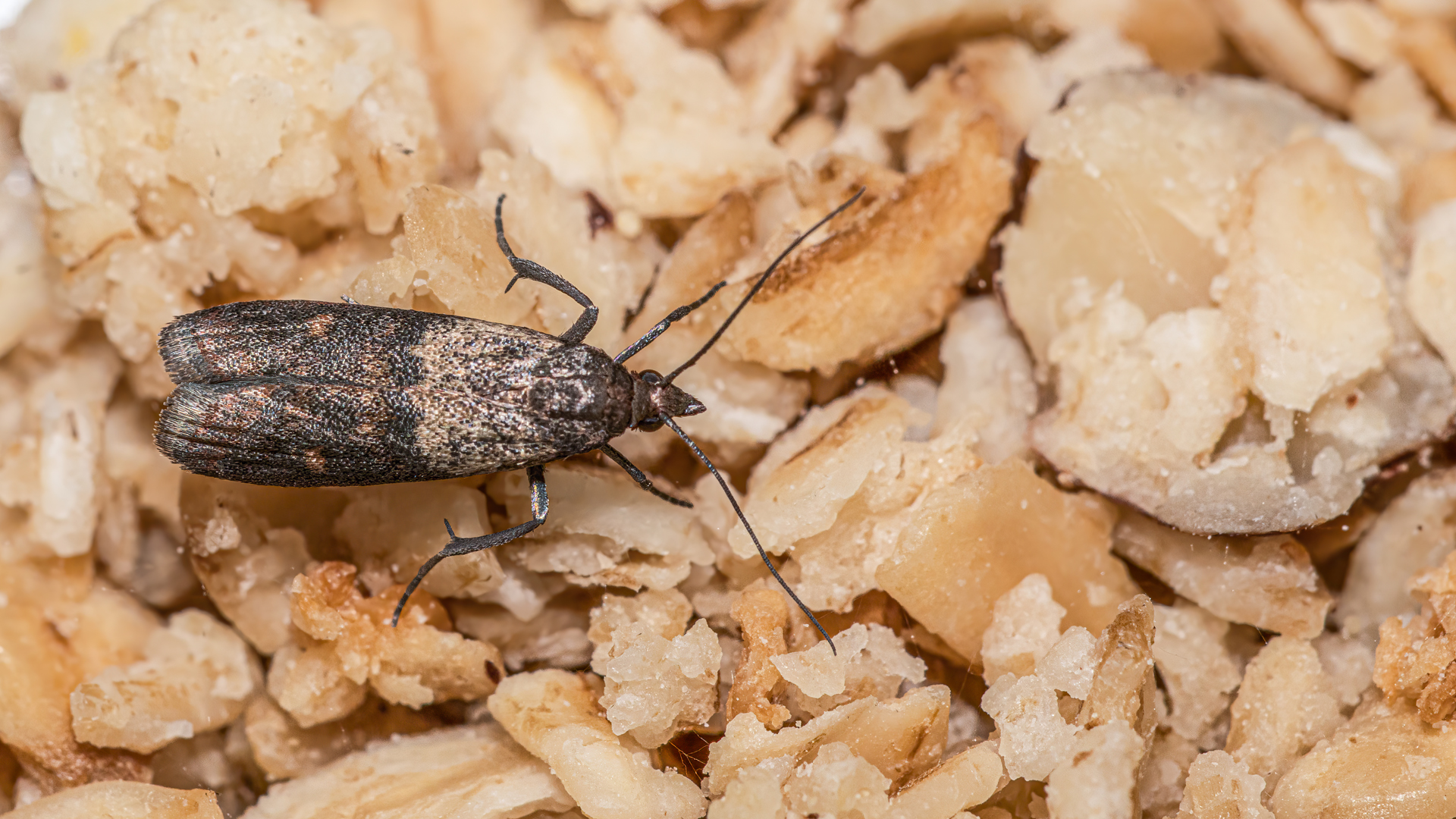With autumn in full swing and the holiday season not far behind, many of us are gathering in our kitchens to prepare sweet, seasonal foods. As you dig out the flour, spices, nuts and other dried goods for the first time in nearly a year, don’t forget to check for signs of pantry pest infestation. In this blog, we explain what you need to look out for and how we can help you put pantry pests to rest in your home.
What Are Pantry Pests?
Pantry pests, more frequently referred to as grain insects, fall into two categories: grain beetles and meal moths. According to the National Pest Management Association (NPMA), the most common pantry pest is the Indianmeal moth, although weevils and certain other grain beetles are also highly prevalent. All pantry pests are known to hide in dark spaces, laying their eggs on grain products in your home. When the eggs hatch, the larvae feed and grow until they are ready to pupate. At that time, they spin a cocoon, develop within and emerge as a new generation of pests.
What to Look For
Many pantry pests can chew right through packaging and infest a wide range of edible materials, including pet food, bird seed, flour, cereals, nuts, spices, pasta and rice—leading to spoilage. There are several ways you can detect their presence in your home:
- You see them crawling around inside food packages or on pantry shelves.
- You identify webbing or cocoons in food packages.
- You find small holes in packaging.
Pantry Pest Prevention
If you don’t currently have a pantry pest problem and intend to keep it that way, here are five tips to help keep your pantries pest free:
- Inspect groceries for torn packaging or broken seals before buying them, as most pantry pests are brought into homes from items that are already infested.
- Check the expiration dates on items in your pantry before use.
- Store your ingredients in sealed plastic or glass containers with secure lids so pests can’t chew through them.
- Practice good sanitation by wiping up crumbs and spills as soon as possible, and periodically cleaning cupboards with soap and water.
- Regularly dispose of pantry buildup in a sealed receptacle.
Braman Can Help with an Infestation
If you do find yourself with an infestation, you need to immediately throw away all the impacted food. Make sure you vacuum the empty shelves to remove any insects and food particles and store new food products in tightly sealed glass or plastic containers.
If you suspect that you already have a problem, be sure to contact us right away, because incomplete treatment will allow survivors to re-infest the area. Our highly trained technicians can analyze your situation and employ applications of insecticides, insect growth regulators and pheromone traps to put your pantry pests to rest—for good.

